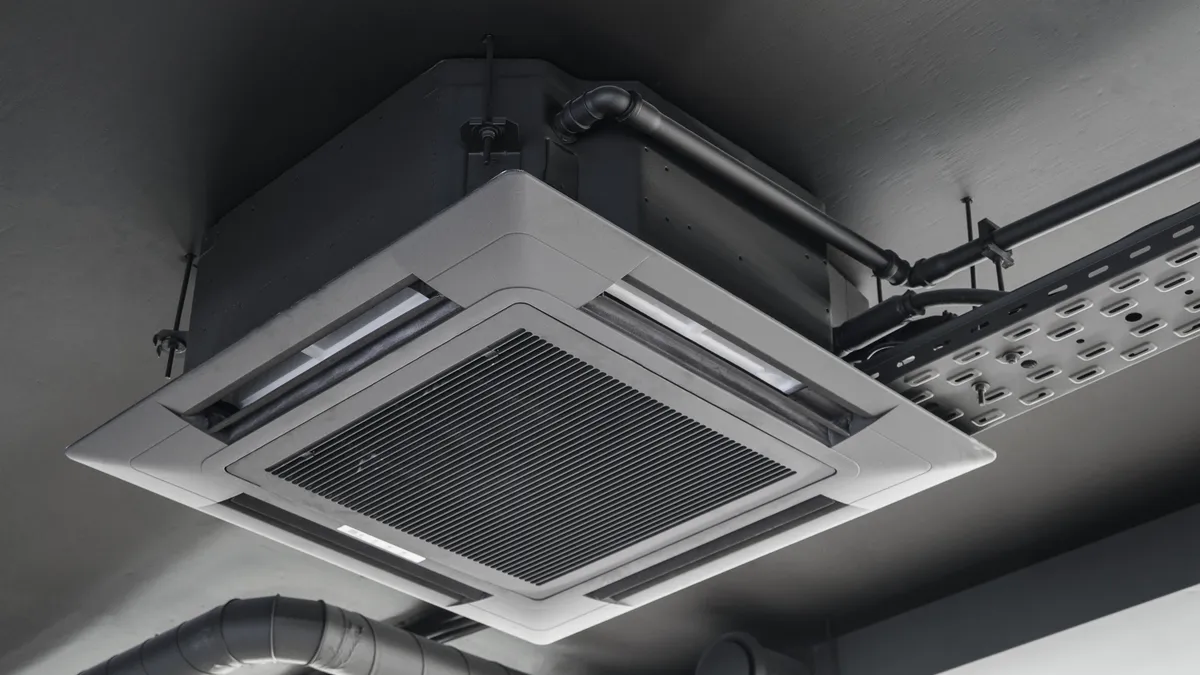A last-minute change to the Inflation Reduction Act of 2022 expanded opportunities for for-profit businesses, partnerships and some nonprofits to sell clean energy tax credits to eligible buyers.
The U.S. Department of the Treasury on March 5 released final rules governing these sales, also known as tax credit transfers. These final rules set the stage for the market to continue accelerating rapidly, according to Crux CEO Alfred Johnson.
A simpler way to monetize clean energy tax credits
Johnson, whose company connects tax credit buyers and sellers, elaborated on the opportunities created by the IRA’s tax credit transferability mechanism in an interview with Facilities Dive.
The biggest change, he said, is that eligible taxpayers can now directly transfer or sell 11 different clean energy credits to eligible buyers, including the Section 45 renewable energy production tax credit, the Section 48 energy investment tax credit and the Section 30C alternative fuel refueling property credit.
Previously, most tax credit buyers were investors in tax equity partnerships that took stakes in clean energy projects in exchange for tax benefits such as credits or depreciation, Johnson said. Since these types of tax equity transactions are complicated, time-consuming and costly, the pre-IRA pool of potential tax credit investors was effectively limited to “financial institutions or insurance companies with large, predictable tax liabilities,” he added.
The new, simpler IRA structure has broadened the market, attracting interest from a wider range of companies interested in buying IRA tax credits, Johnson said. He noted that participants now include not only some of the largest companies globally, but also smaller public companies, private businesses and family offices.
ITCs are generally worth 30% of the “qualified investment basis” if the project meets prevailing wage and apprenticeship requirements, according to the IRS. Certain bonus credits, covering projects that use domestic content, serve low-income communities or operate in energy communities historically dependent on the fossil fuel industry, can push the total credit value to 50% or beyond, the IRS says.
However, “[credit] sellers generally need to prove their qualification for the bonus credit amounts and this is often a key diligence item,” Johnson cautioned.
More credits, more buyers and sellers
“The market is developing in real time."

Paul Gordon
Tax financing specialist and partner at Morgan Lewis
The deal value of tax credit transactions is estimated to range from $7 billion and $9 billion in 2023, according to a market intelligence report Crux released in January. “Tax credit transfer volumes in 2024 may significantly exceed last year,” the company said in an April 3 update, noting that buyers placed over $1.5 billion in bids on its platform in the first quarter of 2024. In a subsequent white paper, Crux predicted that tax credit transaction volumes could reach about $85 billion in tax attributes per year by 2031.
Tax credit sellers now able to take advantage of the transfer mechanism include renewable energy developers building projects too small for traditional tax equity, companies that “have built some kind of energy infrastructure to power a data center or facility [but lack] the internal need for credits” and companies selling credits “associated with merchant battery storage, EV charging infrastructure or another category that has not traditionally been financed via tax equity,” Johnson said.
The most common type of credit Crux saw last year was the 45X advanced manufacturing production credit, followed by the solar ITC, Johnson said. He noted that the solar ITC, which falls under the Section 48 framework, “is available for a wide range of solar projects, from large utility-scale installations to smaller portfolios of community solar or residential solar projects.”
This year, Crux has been seeing “newly available tax credits … hit the market in volume, including the 45Q carbon capture credit and the 45V hydrogen production tax credit,” Johnson added.
Because the tax credit transfer mechanism is more straightforward than traditional tax equity financing, individual deals can be smaller, Johnson said in an April interview on the Volts podcast. Whereas the minimum deal size for tax equity financing is typically around $50 million in credit eligibility, “the majority of transactions that we tracked were below $50 million in size, suggesting that transferability is leveling the playing field,” Johnson told Volts host David Roberts.
Nevertheless, the tax credit transfer market will likely skew toward larger deals in the near term, said Paul Gordon, a tax financing specialist and partner at Morgan Lewis.
“The market is developing in real time,” with most deals still directly negotiated between counterparties, Gordon said. Most buyers today are larger corporations that need at least $10 million to $20 million in tax credit eligibility to “move the needle,” he said.
But the transferability mechanism will “democratize” within three to five years as aggregators, or syndicators, create a more robust, standardized market for smaller deals that they can pool together, Gordon predicted.
While Crux doesn’t aggregate tax credit transfers itself, its website touts its benefits for banks, syndicators and advisors who can use its “purpose-built workflows” to connect buyers and sellers in their own client networks.
For non-syndicated buyers and sellers, Crux has a “suite of standard documents [and] due diligence infrastructure” to streamline tax credit transactions, Johnson said. When a buyer and seller match up and agree to proceed with a deal, Crux acts as a facilitator, handling “structured data uploads” and offering an in-platform messaging tool to manage the “hundreds of emails” buyers and sellers typically exchange, Johnson noted on the podcast.
Discounts, insurance and political risk
“Buyers typically do not have any input or control over project operations, and so insurance plays an important role [in] protecting the buyer from risks they couldn’t otherwise mitigate.”

Alfred Johnson
CEO of Crux
Tax credits typically trade below their face value, Gordon said. ITCs representing one-time investments in new energy projects or assets usually sell for 90 cents to 92 cents per dollar for standard-risk projects, for less than 90 cents per dollar for higher-risk projects and occasionally up to 95 cents per dollar for lower-risk projects, Gordon said. PTCs, which are based on production from existing projects and offset the holder’s tax liability for multiple years, often go for 95 cents or 96 cents on the dollar, he said.
In both cases, larger deals tend to have smaller discounts, Gordon added.
ITCs’ steeper discount stems in part from the inherent risk involved in newly developed projects, Gordon said. One of the biggest issues is that the IRS can “claw back”, or recapture, the tax credit on a project if its ownership changes during its first five years of operation, S&P Global noted in an analysis last month.
Another challenge with ITC transactions is the uncertain value of the credit before the project is completed, Johnson said in the Volts podcast. Cost calculations before a project goes into service tend to focus on “hard costs” and can’t account for “observable market data that your project is worth more” once it becomes active, he added.
A related issue is basis risk, which occurs if the IRS decides that a project has “overstated its cost basis” and determines that the associated credit value is lower, Johnson said.
Production credits are also more flexible than ITCs, allowing the holder to transfer “some or all of the credit each year” as long as payments for future tax years aren’t made in advance, said Don Lonczak, a partner and tax transaction specialist at Pillsbury Winthrop Shaw Pittman.
Despite the flexibility and lower upfront risk of production credits, most tax credit transfers he has seen so far have been ITCs, Lonczak said. “There’s more certainty around what you’re getting there” due to the one-time nature of the credit, though “I don’t think I can say that’s indicative of a trend” in future transaction volumes, he said.
PTC deals may feature discount rates that increase over time as a hedge against the uncertainty of calculating production years in advance, Lonczak added.
That future uncertainty has a political dimension, Gordon said. While “retroactive changes” affecting existing projects are unlikely in the event of full Republican control of the federal government in 2025, lawmakers could amend the IRA to phase out its tax credits faster or “de-sweeten” its benefits in other ways, Gordon said.
“You have to have a political crystal ball” to look beyond the November election, he added.
While most credit transactions see the seller indemnifying the buyer against potential losses, buyers can purchase insurance to reduce their risk further, Lonczak said.
“Buyers typically do not have any input or control over project operations, and so insurance plays an important role [in] protecting the buyer from risks they couldn’t otherwise mitigate,” Johnson said.
Insurance has been available on traditional tax credit transactions for many years, but there is now “a huge gold rush for the insurers” as the transferability market scales up, Gordon said. He added that a “full-wrap” policy, which protects the buyer from virtually any risk not caused by their own error, costs roughly 1.5% to 2% of the credit amount.
Sellers “are generally responsible” for taking out the policy and paying the premium, Johnson said.
Correction: An earlier version of this story misstated the unit of currency for production tax credits. It is 95 cents.




















